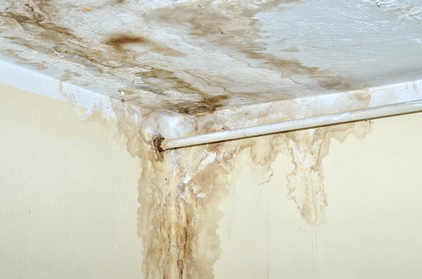Do's & Don'ts of Water Restoration.
Do's & Don'ts of Water Restoration.
Blog Article
We've uncovered this great article relating to Ways to Reduce The Risk Of Fire And Water Damage down the page on the web and thought it made good sense to share it with you here.

Though water offers life, water breach on parts where it's not expected to be can lead to damage. If the water soaks into your structure, it can peel away surface areas and deteriorate the foundation. Mold and mildew and also mildew likewise prosper in a moist environment, which can be unsafe for your wellness. Homes with water damages smell mildewy and also old.
Water can originate from lots of sources such as tropical cyclones, floodings, ruptured pipelines, leakages, and also drain problems. In case you experience water damage, it would certainly be great to know some safety and security precautions. Here are a couple of standards on how to take care of water damages.
Do Prioritize Residence Insurance Coverage Protection
Water damage from flood as a result of hefty winds is seasonal. However, you can also experience an abrupt flooding when a defective pipeline instantly ruptures right into your residence. It would certainly be best to have house insurance that covers both acts of God such as all-natural calamities, as well as emergency situations like damaged plumbing.
Don't Neglect to Switch Off Energies
This reduces off power to your whole house, stopping electric shocks when water comes in as it is a conductor. Don't neglect to transform off the major water line valve.
Do Stay Proactive as well as Heed Climate Informs
Tornado floodings can be extremely unforeseeable. If there is a background of flooding in your community, remain proactive as well as prepared. Listen to emptying warnings if you live near a lake, river, or creek . Take out prized possessions from the first stage and cellar, then put them on the highest possible level. Doing so decreases possible building damage.
Don't Disregard the Roof
You can avoid rainfall damage if there are no holes as well as leakages in your roof covering. This will protect against water from moving down your walls and also saturating your ceiling.
Do Focus On Tiny Leaks
A ruptured pipeline does not happen over night. Normally, there are red flags that show you have weakened pipes in your home. For example, you may discover bubbling paint, peeling off wallpaper, water touches, water spots, or trickling audios behind the wall surfaces. Ultimately, this pipeline will certainly burst. Ideally, you need to not wait for things to intensify. Have your plumbing fixed before it results in huge damage.
Do Not Panic in Case of a Ruptured Pipe
Maintaining your clearheadedness is important in a time of situation. Panicking will only intensify the issue since it will suppress you from acting quickly. When it involves water damage, timing is vital. The longer you wait, the even more damage you can anticipate. Thus, if a pipeline bursts in your home, promptly shut off your main water valve to remove the resource. Unplug all electrical outlets in the location or turn off the circuit breaker for that part of the house. Call a reliable water damages remediation expert for help.
Water offers life, water intrusion on parts where it's not expected to be can result in damages. Residences with water damages smell old as well as stuffy.
Water damage from flood fees to hefty winds is seasonal. You may discover gurgling paint, peeling wallpaper, water touches, water discolorations, or dripping audios behind the wall surfaces. When it comes to water damage, timing is key.
Some Do's & Don't When Dealing with a Water Damage
DO:
Make sure the water source has been eliminated. Contact a plumber if needed. Turn off circuit breakers supplying electricity to wet areas and unplug any electronics that are on wet carpet or surfaces Remove small furniture items Remove as much excess water as possible by mopping or blotting; Use WHITE towels to blot wet carpeting Wipe water from wooden furniture after removing anything on it Remove and prop up wet upholstery cushions for even drying (check for any bleeding) Pin up curtains or furniture skirts if needed Place aluminum foil, saucers or wood blocks between furniture legs and wet carpet Turn on air conditioning for maximum drying in winter and open windows in the summer Open any drawers and cabinets affected for complete drying but do not force them open Remove any valuable art objects or paintings to a safe, dry place Open any suitcases or luggage that may have been affected to dry, preferably in sunlight Hang any fur or leather goods to dry at room temperature Punch small holes in sagging ceilings to relieve trapped water (don't forget to place pans beneath!); however, if the ceiling is sagging extremely low, stay out of the room and we'll take care of it DO NOT:
Leave wet fabrics in place; dry them as soon as possible Leave books, magazines or any other colored items on wet carpets or floor Use your household vacuum to remove water Use TV's or other electronics/appliances while standing on wet carpets or floors; especially not on wet concrete floors Turn on ceiling fixtures if the ceiling is wet Turn your heat up, unless instructed otherwise

I am just very excited about Reducing Your Risk Of Water And Fire Damage At Home and I really hope you enjoyed reading the entire page. I beg you take the time to distribute this article if you appreciated it. I love reading our article about Safety Tips To Prevent Fire And Water Damage.
Report this page